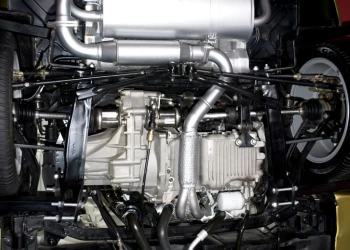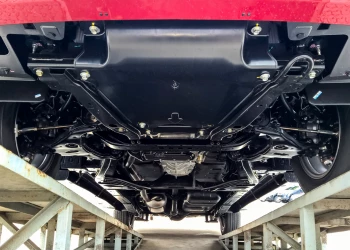Autonomous Driving: Beacon Projects in Europe
Add bookmarkSelf-driving vehicles present the next technological frontier in the automotive industry. Manufacturers and technology companies have clamored to tell us that we’re on the verge of being driven around by our cars, but when will autonomous vehicles truly be a reality?
OEMs are generally less keen to put an exact time frame on the sale of self-driving cars to the public, and understandably so, as there are several hurdles to overcome. The most significant challenges are technological and regulatory, and until those questions are satisfactorily answered, we’ll have to keep our hands on the wheel and our eyes on the road.
However, the change is coming and it looms larger on the horizon with each passing year. Already legislators in Europe and the US are considering the impact self-driving cars will have on road safety, and drawing up regulations pertaining to how autonomous driver assistance systems should respond in certain circumstances, and how they should be assessed for safety and compliance before reaching market. The challenges may surround technology and legislation, but they are shaped by a number of other factors that will potentially affect a driverless vehicle. These include other road users, cyclists and pedestrians, weather conditions, vehicle-to-vehicle and vehicle-to-X communication, mapping and navigation, road layout, and other unexpected incidences.
The race to be first to market with autonomous technology is gathering pace nonetheless, and a variety of different projects across Europe demonstrate the approach to autonomous cars by various OEMs.
Audi Testing on the Autobahn
One year on from the launch of the ‘Digital Motorway Test Bed’, Audi recently announced new technologies for Piloted Driving and Car-to-X Communication at the German Federal Ministry of Transport. The focus is on online variable message road signs and infrastructure measures, with Audi testing solutions aimed at delivering enhanced safety and convenience in piloted driving and real traffic conditions.
The Digital Motorway Test bed is a joint initiative where several sections of the A9 between Nuremberg East and Munich North are equipped with transmitters and sensors which connect cars with their surroundings as well as other vehicles. Audi is involved with six research projects - three focusing on structural measures, and three on communication technologies.
As part of the structural projects, ideas include modifying the materials used for marker posts and guard rails so that they reflect radar waves better, from a greater distance, and in snow and rain. Other aims include improved sensors on test cars so that they can more easily detect road markings, while special supplementary roadside markings will enable vehicles to localize themselves by camera in relation to road markings with high precision.
[inlinead]
The ‘Car2Infrastructure’ communication project connects the car with online variable message road signs. These signs alert drivers by mobile connection of real time information such as speed limits, traffic jams and lane closures. Information gathered by sensors is uploaded to the Audi cloud via a mobile network, from where it is transferred back to test cars to provide an integral facet of piloted driving. Future mobile technology LTE-V enables the data transfer modules in the cars to communicate directly with one another, even in regions without mobile coverage. The LTE-V technology also allows safety functions such as black ice warnings, and ‘platooning’ whereby piloted driving vehicles form an energy-saving convoy. A further communications project is surveying two sections of the A9 with centimeter precision, identifying and defining objects such as bridges, signs and road markings. This information is fed into the HERE HD Live Map, which is being permanently supplemented and updated.
Those projects give a glimpse into the autonomous infrastructure of the future, and Audi’s first Car-to-X services will be rolled out before the end of the year. Traffic sign information and hazard information (in Europe) and traffic light information online (in the USA) represent a step towards Audi’s vision of swarm intelligence - the sharing and use of complex information in a large group.
Volvo Drive Me Starting Off in Gothenburg
In September of this year, Volvo announced that it had produced the very first car that will be used as part of its landmark ‘Drive Me’ project in Gothenburg.
The Swedish manufacturer is set to begin the Drive Me autonomous trials in 2017, in which it will hand over a series of autonomous cars to real families, who will drive them on public roads as part of the project. 100 XC90s will be equipped with the technology which underpins Volvo’s IntelliSafe Autopilot system. Some of Gothenburg’s most popular commuter routes have been chosen for the trial, ideal for testing according to the manufacturer as they have average speeds of 70km/h, no pedestrians, and plenty of separation between lanes.
The Drive Me cars will provide ‘hands-off’ and ‘feet-off’ capability within these specified zones, powered by what Volvo calls the autonomous driving brain. As the vehicles come off the production line they will be subject to a rigorous testing phase to ensure the advanced autonomous driving technology functions as it should. Only then will the vehicles be handed over to customers, although initially, they have to supervise and be responsible for the car, since the technology is not yet validated.
Volvo’s customer-focused approach is an interesting angle to this project, during which they will gather input and feedback from drivers about how the autonomous car will affect their lives, how it will change their driving habits, and how much they trust the cars. Volvo says it is aiming to have fully autonomous production vehicles on the road by 2020, but only in selected areas. The Gothenburg Drive Me project will be followed up with a similar trial in London, and Volvo says it is also proposing a project in a city in China.
In another interesting announcement this summer, Volvo confirmed that it has entered into a partnership with ride-sharing company Uber, to develop the next generation of autonomous cars. The $300m joint project will develop new base vehicles that will be able to incorporate the latest advances in AD technologies. Both Volvo and Uber will use the same base vehicle to develop their own autonomous driving strategies separately, but according to Volvo the alliance marks the beginning of a long-term industrial partnership.
Driverless Pods Scurrying Through the UK
Another innovative and very different autonomous driving project is taking place in the UK, where the first public demonstration of a ‘driverless pod’ was carried out earlier in October.
The Transport Systems Catapult’s Lutz Pathfinder project will culminate in a trial of self-driving pods traveling on designated pathways in urban and pedestrian areas. The project will be extended to 40 pods, plus autonomous road-going cars, in UK cities Coventry and Milton Keynes. The first public demonstration of a self-driving pod took place on pavements around Milton Keynes train station and business area. It is anticipated that in the future, vehicles like these may be used for transportation in urban areas.
The two-seater pods are currently equipped with a steering wheel and have a maximum speed of 15mph, but will be limited electronically depending upon the environment they are driving in. During trials a trained operator must be present in the pod, ready to take back control of the wheel if necessary. The project team undertook various exercises in preparation for the public demonstration, including virtual mapping of Milton Keynes, assessing public acceptance and conducting the necessary safety planning. The autonomy software running the vehicles, called Selenium, was developed by Oxford University’s Oxford Robotics Institute and integrated into an electric vehicle by Oxbotica. Data from cameras and LiDAR systems enable the car to navigate its environment.
According to the TSC, the Lutz Pathfinder project will feed into a much wider programme of autonomous trials across the UK.
BMW Committing to Open Platform With New Partnership
Another project to keep a close eye on is the collaboration between BMW, Intel and Mobileye, announced in July this year.
The three companies have formed a partnership to make self-driving cars a reality, with the aim of production autonomous vehicles by 2021. The three firms also expressed their commitment to strive for an industry standard and to define an open platform for autonomous driving. The open platform will address the ‘eyes off’, ‘mind off’, and ‘driver off’ levels of automated driving, and will be made available to multiple car manufacturers.
A set of milestones have been agreed on to deliver fully autonomous cars with a common reference architecture. In the short-term, the companies will demonstrate an autonomous test drive with a highly automated driving prototype. In 2017, the platform will extend to fleets with autonomous test drives.
Automotive and Telecoms Industry Projects
Standardization and infrastructure have become key issues in the development of an autonomous future, and to this end an EU-wide project between automotive and telecommunications trade associations was announced in July.
The organizations involved are ACEA (the European Automobile Manufacturers’ Association), CLEPA (European Association of Automotive Suppliers), ETNO (the principal policy group for European electronic communications network operators), ECTA (European Competitive Telecommunications Association), and the GSMA (which represents the interests of mobile operators worldwide).
The foundations of the project were laid out in a meeting in Brussels in July, with the main aim to strengthen Europe’s leadership in connected and automated driving, by accelerating the EU-wide deployment of related key technologies. The industry-led project will focus on use cases and test functionalities in three main areas:
- Automated driving
- Road safety and traffic efficiency
- The digitalization of transports and logistics
Functions under consideration are high-density platooning, cooperative collision avoidance, remote control parking, local hazard warnings, and traffic flow optimization. High definition maps will also be updated with a fast connection to the internet via phone or other mobile devices.
The project is expected to start in 2017 and will feature two main phases. The first will run until 2019 and will include tests on available communication technologies, such as LTE (Long Term Evolution) 4G technology. The second phase, which will run until 2021, will be based on both 4G and 5G technologies - bearing in mind that different functionalities have different network requirements. The project will also look at a series of crucial requirements for automated driving, including safety, cyber-security, protection of personal data, quality of service and network latency.
The European dimension is one of the goals of the project, and will be run through a consortium of European companies from both automotive and telecoms sectors. Use cases will be operated across several EU countries, setting the scene for future standardization activities. Specifically, trials will focus on addressing cross-border challenges such as the lack of harmonized spectrum, seamless network handover of vehicles at borders, and open road infrastructure data.
Many Roads Lead to Autonomy
Autonomous driving is set to become a reality in the very near future, but there are different concepts of exactly how the technology will be implemented. OEMs are continuing to develop advanced driving systems to take over responsibility from the driver in more and more situations, but there is also recognition that there is a need for infrastructure and vehicle-to-X communication, which in many cases will require much collaboration.
The TSC project in the UK offers a perspective of a commuter-based system where automated vehicles navigate by a designated path to ease city congestion. Meanwhile, the Volvo Drive Me project takes another route by handing control to the public and gathering feedback about autonomous vehicles on real roads in real life situations. Audi’s involvement in the Digital Motorway Test Bed provides an insight into the level of infrastructure and communication that will be required for autonomous highways of the future.
Ultimately, autonomous driving technology offers a great degree of flexibility. The roads of Europe’s future may well be equipped with a variety of autonomous vehicles specifically designed for purpose - whether short distances in congested urban areas, or long distances on highways.
Sources:
- https://ts.catapult.org.uk/news-events-gallery/news/self-driving-vehicles-operating-public-first-time/
- https://www.media.volvocars.com/global/en-gb/media/pressreleases/196240/drive-me-the-worlds-most-ambitious-and-advanced-public-autonomous-driving-experiment-starts-today
- https://www.audi-mediacenter.com/en/press-releases/new-technologies-for-piloted-driving-audi-participating-in-digital-motorway-test-bed-6957
- https://www.press.bmwgroup.com/global/article/detail/T0261586EN/bmw-group-intel-and-mobileye-team-up-to-bring-fully-autonomous-driving-to-streets-by-2021?language=en
- http://www.acea.be/press-releases/article/automotive-and-telecoms-sectors-to-launch-eu-project-for-connected-and-auto






















